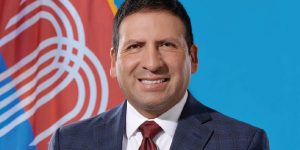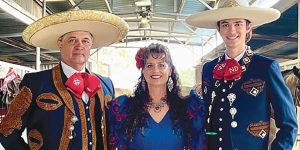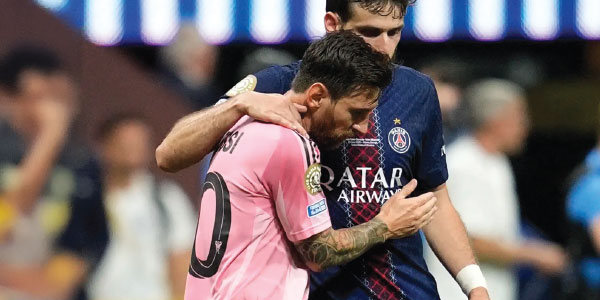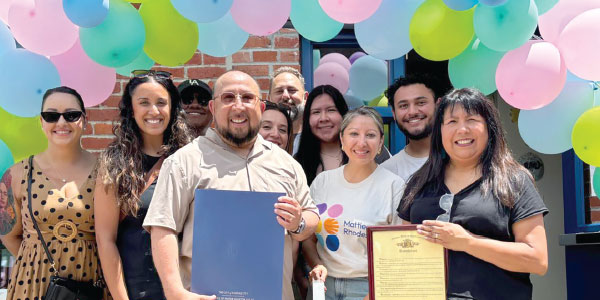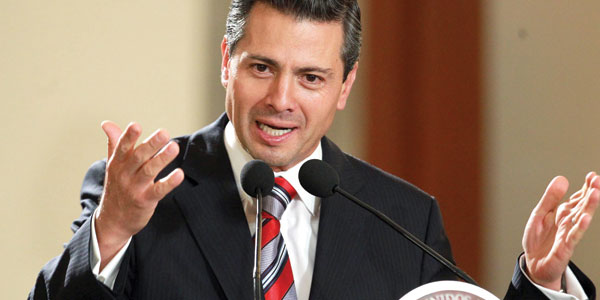
It was supposed to be a day of love. It ended as a day of death.
On Valentine’s Day, Feb. 14, I had just finished interviewing Gloria and Emilio Estefan about their more than four-decade relationship and successful career. Good vibes prevailed. I left their recording studio in Miami feeling hopeful; this is always the case after I speak with this talented pair of optimists. Then I turned on the radio, and everything changed.
There had been a shooting.
Another shooting at an American school. I listened carefully; the palms of my hands started sweating.
Please, not at my son’s school, I thought.
Please, not at the elementary school in my neighborhood.
Please, not … But it was very close. Less than an hour from where I live.
A 19-year-old, armed with a gun made for war, smoke grenades and a gas mask, had shot up his former high school. I rushed to the television station and watched the desperate images of blood-spattered students and teachers. I can still hear the cries of a girl watching as emergency responders carried away a wounded classmate while another was left lying in a red puddle, unmoving.
Like so many of us, I’m well acquainted with this ritual by now. We’ve seen it too many times. First come the rumors and the mistaken numbers (as a rule, veteran journalists are suspicious of the first reports following a tragedy). Then the official reaction, in this case, from President Donald Trump, denying the reality in a tweet: “No child, teacher or anyone else should ever feel unsafe in an American school.” Then, hours later, the blow: the names and the faces of the victims. Later, videos from students inside the school, taken on their phones. Then the lies: Politicians promising to take steps to make sure this doesn’t happen again.
Apologies for my cynicism, but this will happen again, and soon.
In April 2007, I traveled to Virginia Tech to report on the aftermath of the shooting of 32 students and teachers there. I remember entering the university’s classrooms and saw just how easy it had been for Seung-Hui Cho to kill. This cannot happen again, I thought. But I was wrong. In December 2012, Adam Lanza killed 20 children — 6- and 7-year-olds — and six teachers in Newtown, Connecticut. The national mourning that followed proved useless.
I have covered enough massacres to know that this country lacks the political will to restrict access to guns. The Washington Posté estimated that in 2013 there were already more guns — 357 million — than people in the United States.
And yes, massacres happen in foreign cities — as in Paris, where 130 people were killed in coordinated attacks, most at the Bataclan club — and in more violent countries, like Mexico, where over 25,000 people were killed last year. But massacres such as the one in Florida last week are becoming an American phenomenon.
“This happens nowhere else other than in the United States of America,” said Democratic Sen. Chris Murphy in Washington shortly after the shooting, “this scourge of school shooting after school shooting.” He continued: “We are responsible for a level of mass atrocity that happens in this country with zero parallel anywhere else.”
He is right. This happens in the United States because obtaining a gun here is relatively easy. The Second Amendment guarantees the right to bear arms. But if there are regulations for those who want to drive a car, in the form of written exams and driving tests, why not impose the same sorts of standards on people who want to own a gun?
And it is fully irresponsible to allow people with a criminal record or mental health issues access to guns. Period.
There are emotionally disturbed people all around the world. The alleged gunman in Florida has been described as “troubled,” and had been expelled from the school. But in the United States, people with mental illness and even criminal records often have an easier time buying rifles and handguns than they do prescription medications.
But my words are completely wasted. Neither the president nor Congress dares do something about this problem. They would rather just not talk about it.
(Jorge Ramos, an Emmy Award-winning journalist, is a news anchor on Univision.)
____________________________________________________________________________________
Jorge Ramos: De Esto No Se Habla
Iba a ser el día del amor. Terminó siendo el día de la muerte.
Acababa de entrevistar a Gloria y Emilio Estefan sobre su relación — y exitosa carrera — de más de cuatro décadas. Puras buenas vibras. Salí de su estudio de grabación en Miami esperanzado; siempre me pasa luego de hablar con ese par de talentosos optimistas. Prendí la radio del auto y todo cambió. Un tiroteo.
Otra vez en una escuela de Estados Unidos. El oído se me afinó y las palmas de las manos me empezaron a sudar.
Que no sea, por favor, en la universidad de mi hijo.
Que no sea en la escuela primaria cerca del vecindario.
Que no sea…
Pero era demasiado cerca. A menos de una hora de donde vivo. Un adolescente de 19 años con un arma como de guerra, granadas de humo y máscara antigás le disparó a sus excompañeros y maestros . Llegué volando al estudio de televisión, y las imágenes estaban embarradas de sangre y desesperación. Tengo grabados en mi mente los gritos de una niña que, en su propio salón de clase, veía como se llevaban a una compañera herida mientras otra, inmóvil, se quedaba en un charco rojo.
El ritual ya me lo sé. Lo he visto muchas veces. Primero los rumores con todas las cifras y datos equivocados. (Los periodistas veteranos, por regla, dudan siempre de los primeros reportes después de cualquier tragedia.) Luego la reacción oficial. En este caso, el presidente Donald Trump negando la realidad en un tuit: “Ningún niño, profesor o cualquiera se debe sentir inseguro en una escuela del país”. Horas después, el golpe: las caras y nombres de los asesinados y heridos. Más tarde, los videos en los celulares. (Ya nada es privado, ni la muerte.) Y al final, la mentira: los políticos prometiendo que esto no debería repetirse.
Perdónenme esta dosis de cinismo. Pero esto sí volverá a ocurrir en Estados Unidos, y volverá a ocurrir muy pronto.
En abril del 2007 tuve que viajar al Virginia Tech a cubrir la masacre de 32 estudiantes y profesores. Recuerdo haber entrado a esos salones de clase de la universidad y ver lo fácil que fue para el asesino, Seung-Hui Cho, disparar y matar. Esto no puede volver a pasar, pensé. Pero me equivoqué. En diciembre del 2012, Adam Lanza mató a 20 niños — de 6 y 7 años de edad — y a seis maestros en la escuela Sandy Hook de Connecticut. El luto nacional no sirvió de nada.
Me ha tocado cubrir demasiadas masacres como para creer que hay la voluntad política para limitar el uso de las armas de fuego. Un dato: El diario The Washington Post calculó que ya en el 2013 había más armas — 357 millones — que personas en Estados Unidos.
Por supuesto que también hay masacres en otros lugares — como la ocurrida en París con 130 muertos — y hay naciones más violentas — como México, donde en el 2017 fueron asesinadas más de 25 mil personas. Pero matanzas, como la de la escuela en el sur de la Florida, se están convirtiendo en un fenómeno típicamente estadounidense.
“Esto sólo ocurre en Estados Unidos, esta epidemia de matanzas en escuelas, una tras otra”, dijo en el pleno del senado en Washington, la misma noche de la tragedia, el senador Demócrata Chris Murphy. “Somos responsables por las atrocidades que ocurren en este país, que no tienen paralelo en ningún otro lugar”.
Tiene razón. Esto ocurre en Estados Unidos por la enorme facilidad para adquirir armamento. La Segunda Enmienda de la Constitución garantiza el uso de armas. Pero si regulamos a quienes quieren manejar un auto — con exámenes escritos y pruebas para conducir — ¿por qué no hacer lo mismo con quienes desean usar armas? Es absolutamente irresponsable darle acceso a armas de fuego a quienes tienen antecedentes penales o problemas de salud mental.
En todo el mundo hay personas con desbalances emocionales. Por eso el asesino de Parkland había sido expulsado de la escuela. Pero la diferencia en Estados Unidos es que personas con record criminal y con enfermedades mentales pueden adquirir rifles y pistolas con más facilidad que medicinas sin receta.
Pero estas palabras son un desperdicio. La próxima masacre en una escuela ya está anunciada. Ni el Presidente, ni el Congreso se atreven a hacer nada al respecto. De esto no se habla.
(Jorge Ramos, periodista ganador del Emmy, es el principal director de noticias de Univision Network. Ramos, nacido en México, es autor de nueve libros de grandes ventas, el más reciente de los cuales es “A Country for All: An Immigrant Manifesto”.)



